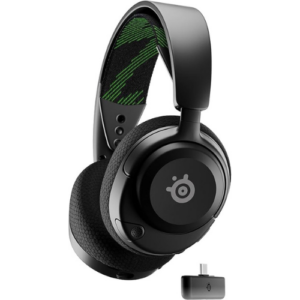The SteelSeries Arctis Nova 4X Wireless is a versatile gaming headset at a competitive price.
SteelSeries Arctis Nova 4X Wireless review
No matter how many gaming headsets I try, I keep going back to the SteelSeries Arctis Nova Pro Wireless. They are the cans to end all cans. That said, that $700+ RRP investment is cause for pause. Now along comes the SteelSeries Arctis Nova 4X Wireless: a more affordable take on the platform ubiquity of its pricier Nova Pro sibling. Let’s look at how this cheaper gaming headset fares.
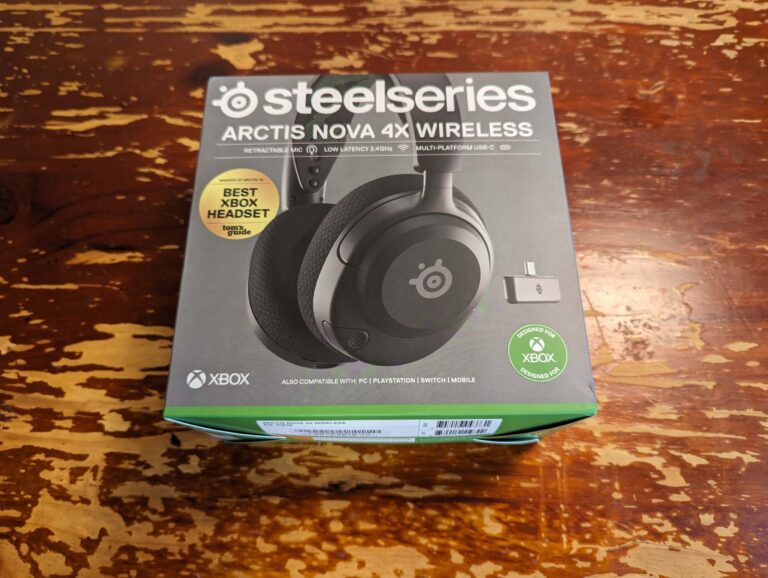
How much does SteelSeries Arctis Nova 4X Wireless cost in Australia?
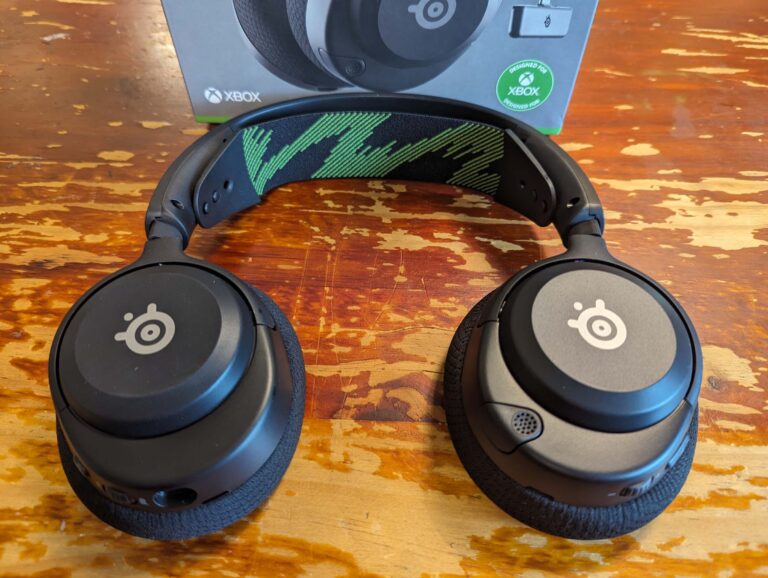
The $250ish RRP puts the SteelSeries Arctis Nova 4X Wireless in the mid-tier category of wireless gaming headsets. While entry-level wireless headsets tend to focus on a platform or two, one of the 4X’s best selling points is it works with pretty much whatever you can throw at it. For alternatives, consider the Turtle Beach Stealth 600x for a bit cheaper or spend a bit more on the Logitech G535 Lightspeed.
SteelSeries Arctis Nova 4X Wireless design and comfort

I’ve been testing the SteelSeries Arctis Nova 4X Wireless for dozens of hours and it’s incredibly comfortable. I’m particularly fond of the battery life, and those SteelSeries claims of 35 hours ring true of my estimated longevity experience. If you do run out of juice, 15 minutes of charging translates to six hours of battery life.
Compared to the Nova Pro, the 4X feels lighter, though it’s still just as comfortable. The plastic outer shell might not look particularly inviting, but it’s what’s inside the headband that counts for comfort: an adjustable fabric head strap and soft earcups. Adjusting the headset length feels a bit stiff but if you’re the only person using it, you should be able to set and forget.
As someone who mains the Nova Pro, it took me a while to get used to the button placements on the 4X. The power button is on the left earcup for the Nova Pros, but it’s been shifted to the right for the 4X. That’s where you’ll also find a chat/audio mix dial and a USB-C charging port. Note there is no 3.5mm port or Bluetooth, the former of which is somewhat surprising.
The left earcup has a mute button, volume dial and retractable bidirectional noise-cancelling microphone. I’m not a fan of the dongle, which is wider rather than longer, as these designs are notorious functionality blockers, which was true of my PlayStation 5 tests (blocked USB port) and Steam Deck (blocked power button). Still, that’s why SteelSeries includes a USB-C to USB-A extender for compatible systems which, in fairness, it recommends using for Xbox, PC and PlayStation platforms specifically.
SteelSeries Arctis Nova 4X Wireless sound and setup
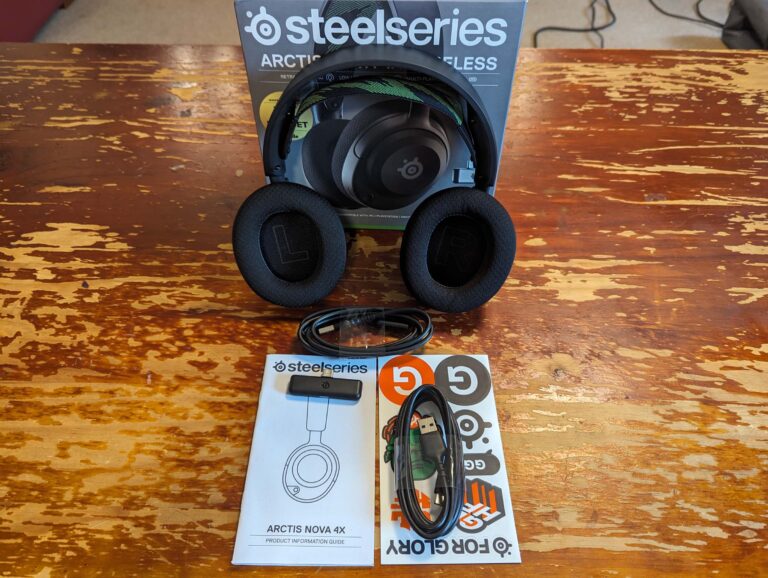
When I first put on the SteelSeries Arctis Nova 4X Wireless cans, I thought the audio balance was out of whack. Rolling the balance dial up on the right earcup quickly sorted that out. The other out-of-the-gates problem was the volume. It wasn’t too quiet at max setting, but nor was it quite loud enough for anyone who needs more volume.
The workaround there is to install SteelSeries GG software and disable the automatically enabled volume limiter setting on the corresponding SteelSeries Engine entry. Now you can boost the volume to louder and even uncomfortable volumes. Whether watching YouTube videos, listening to music, or playing games, the 4Xs offer a solid soundscape, which is improved by using the Bass Boost preset.
Despite the claim in the preset name, boosted bass doesn’t exactly lead to the kind of bass that’ll impress low-end fans. Even Sonar, an extensive preset feature I use with the Nova Pros, didn’t appear to do much to the overall soundscape. In terms of the microphone, the 4X does a good job of blocking background noise and isolating your voice, albeit in a tinnier kind of way. The dedicated boom mics of even the cheaper HyperX Cloud Stinger 2 and Turtle Beach Recon 70 sound better, but that’s typically the price you pay with a retractable mic.
Teammates shouldn’t hate your comms, but nor will those comms sound like the full-bodied version of your voice.
SteelSeries Arctis Nova 4X Wireless settings and versatility
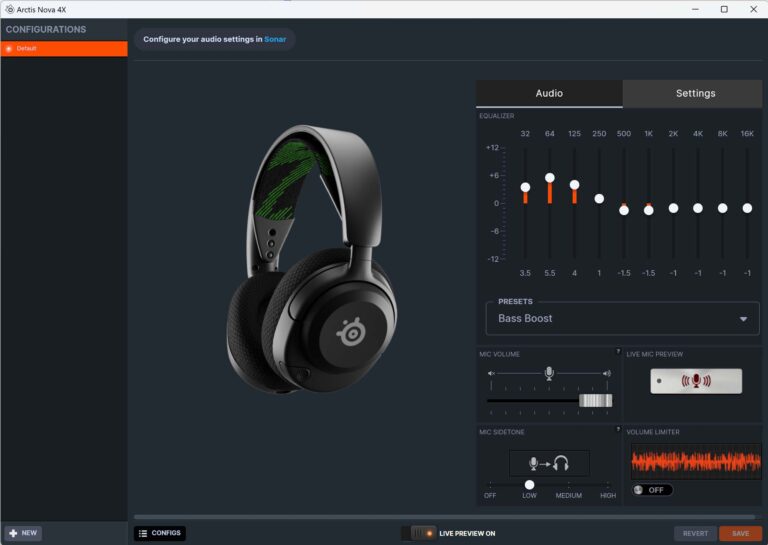
SteelSeries GG is where you can tweak settings for the SteelSeries Arctis Nova 4X Wireless, which are accessible in a few clicks and logically laid out. The audio tab has a minimal selection of four presets (one of which is ‘flat’, so best avoided), but you can also fully customise the equaliser here to suit your tastes.
This screen is also where you’ll tweak mic volume and mic sidetone, with a live mic preview to test your changes. The settings tab is relegated to mic muted brightness and how many minutes of inactivity you want before the 4X turns itself off to preserve battery life. SteelSeries GG is also the home of Sonar, and it was great to see the software intuitively defaulting to the 4X whenever they were connected.
As mentioned above, Sonar did feel limited in replicating its presets on the 4X, but it was a good way to test the accuracy of the headset’s surround sound capabilities. The real versatility of the 4Xs, though, comes from multiplatform capabilities. While it is an Xbox-branded headset, the 2.4GHz dongle is also compatible with PC, PlayStation consoles, Nintendo Switch and mobile devices with a USB-C port. Flick the switch on the dongle for Xbox mode or click it over to USB for every other platform. Connect, wait a few seconds, and you should be good to go on most platforms without having to tweak anything.
Is the SteelSeries Arctis Nova 4X Wireless worth buying?
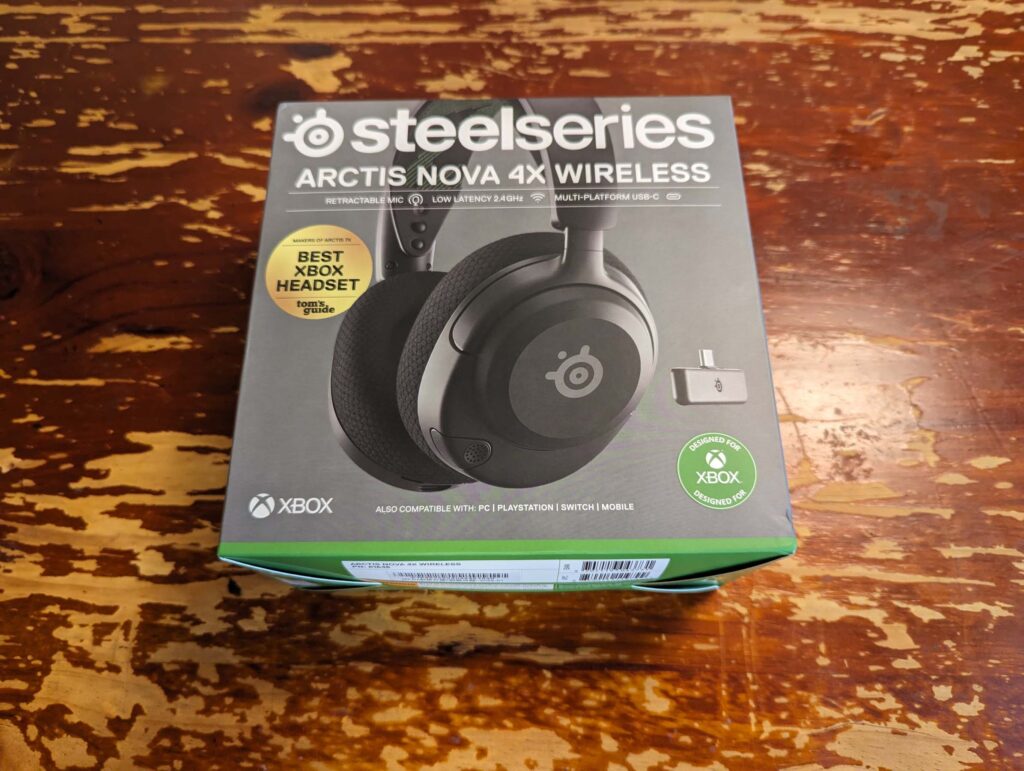
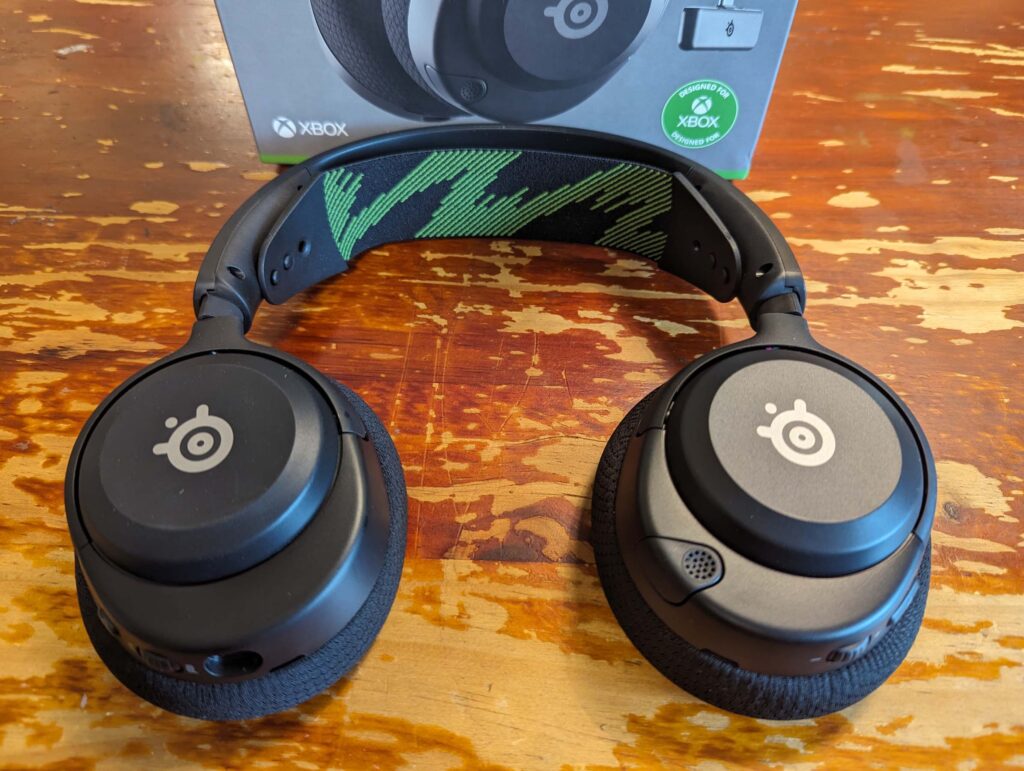
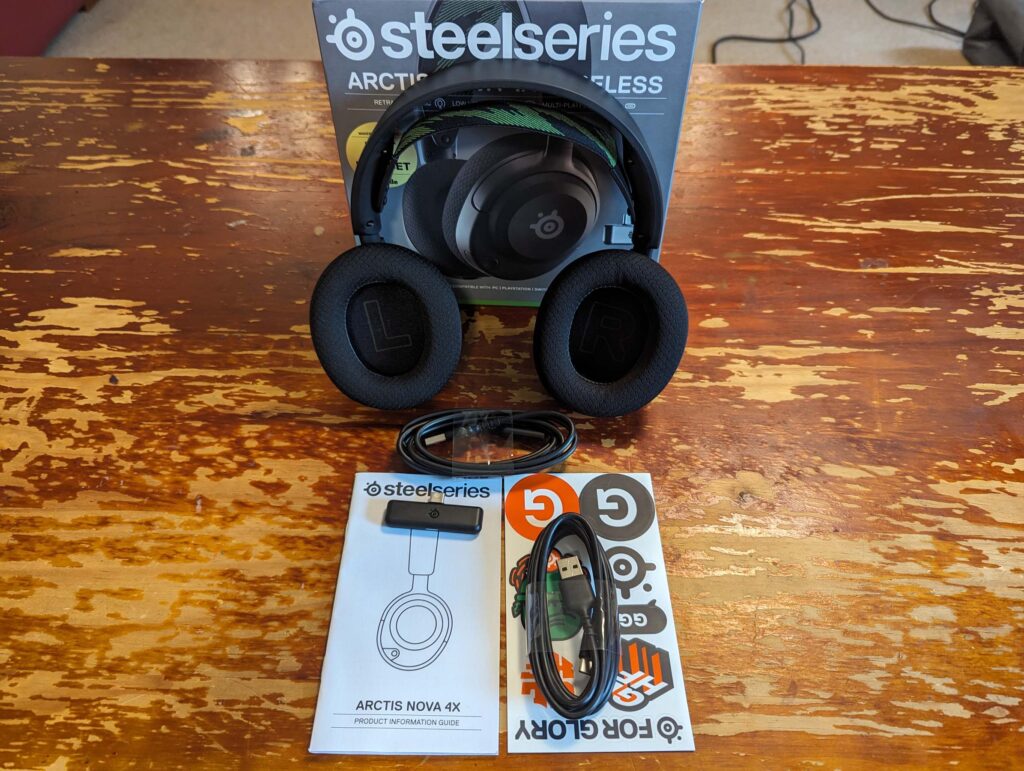


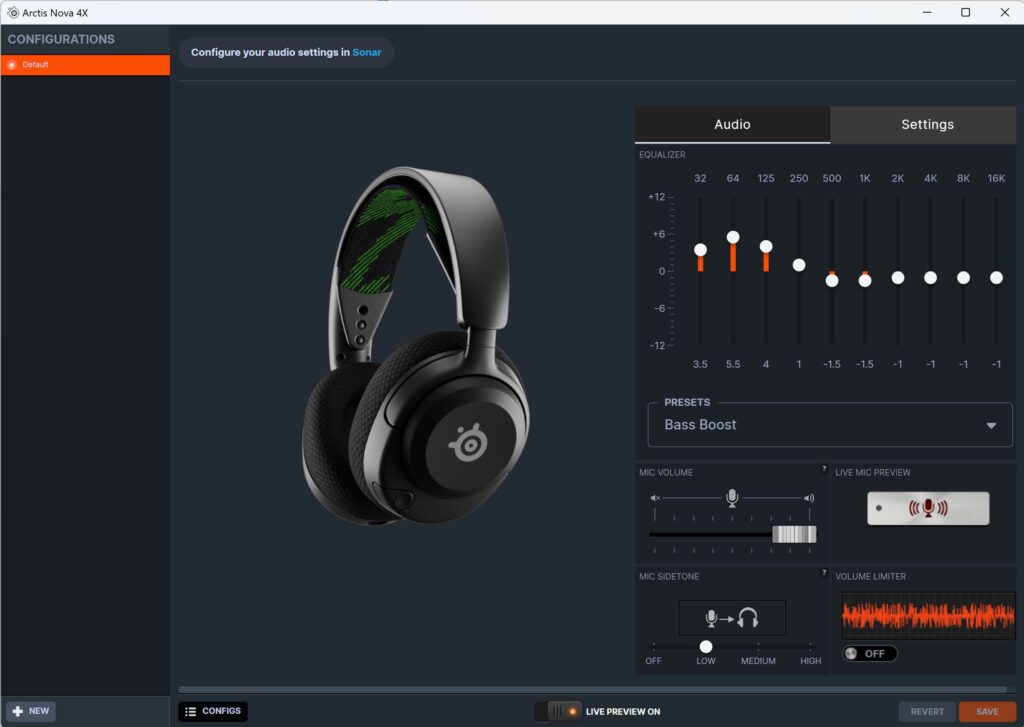
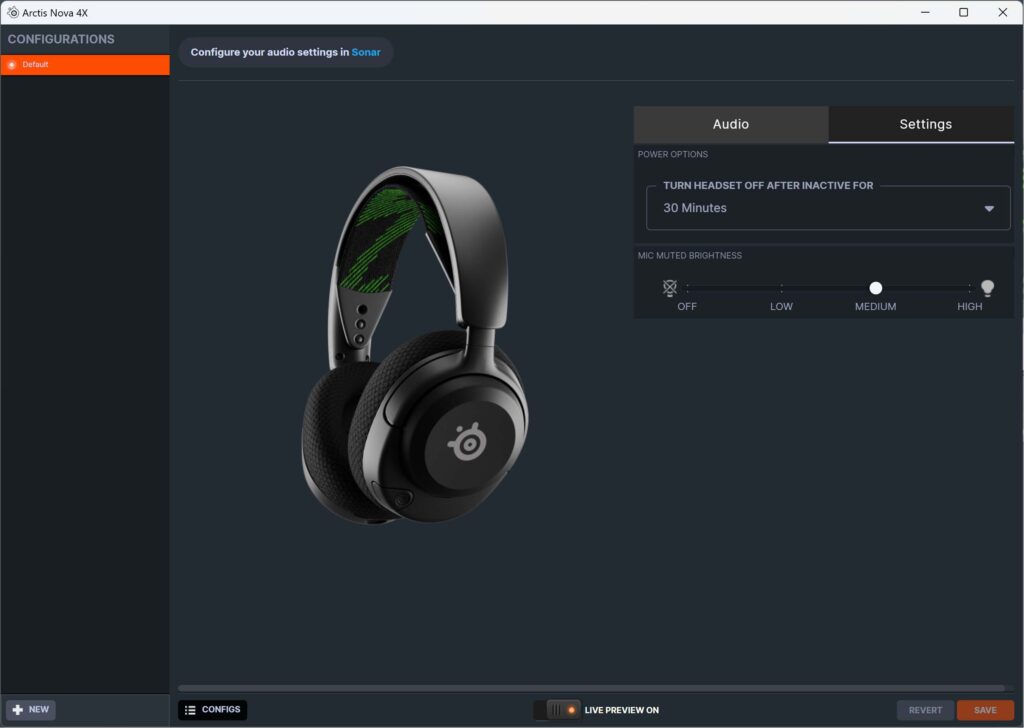
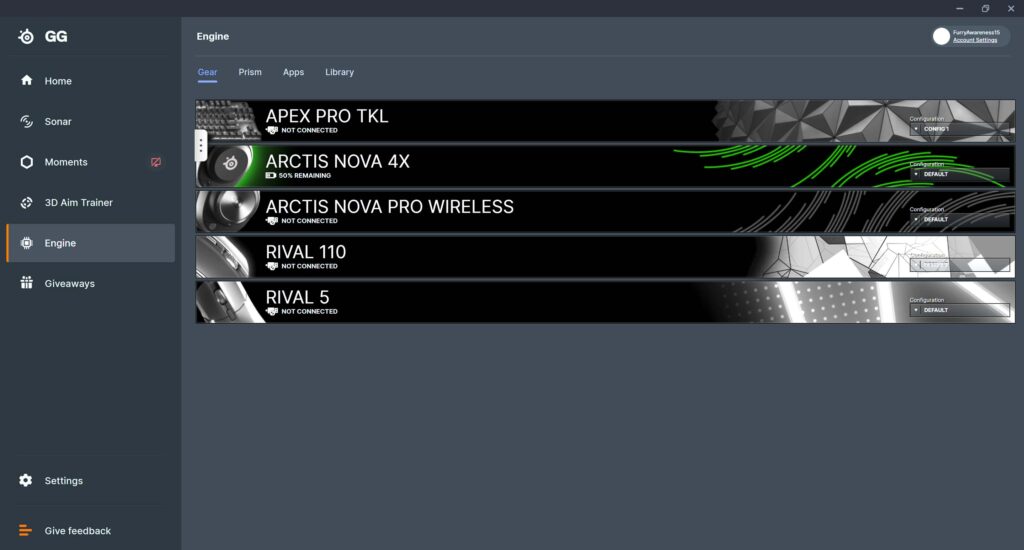
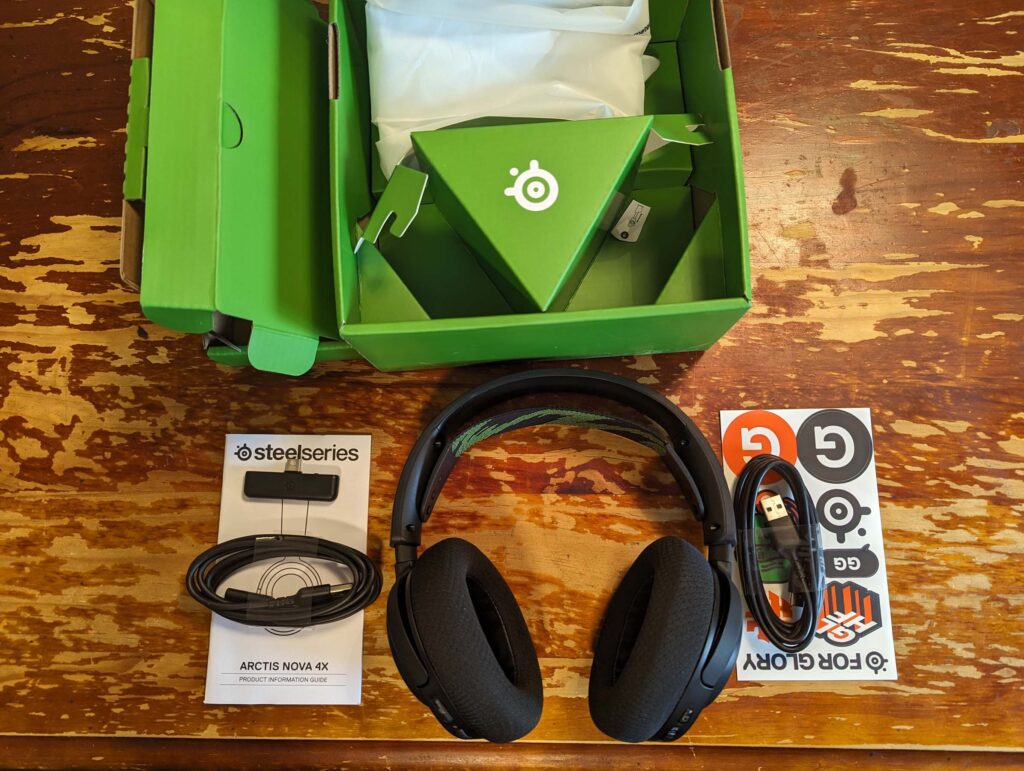
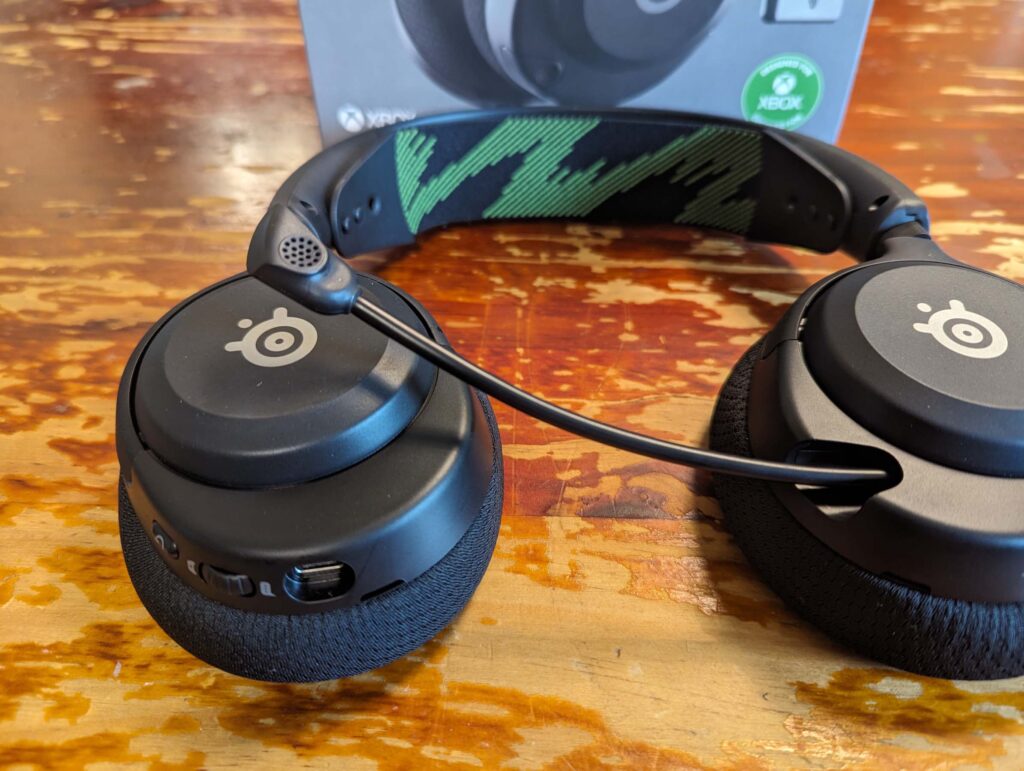
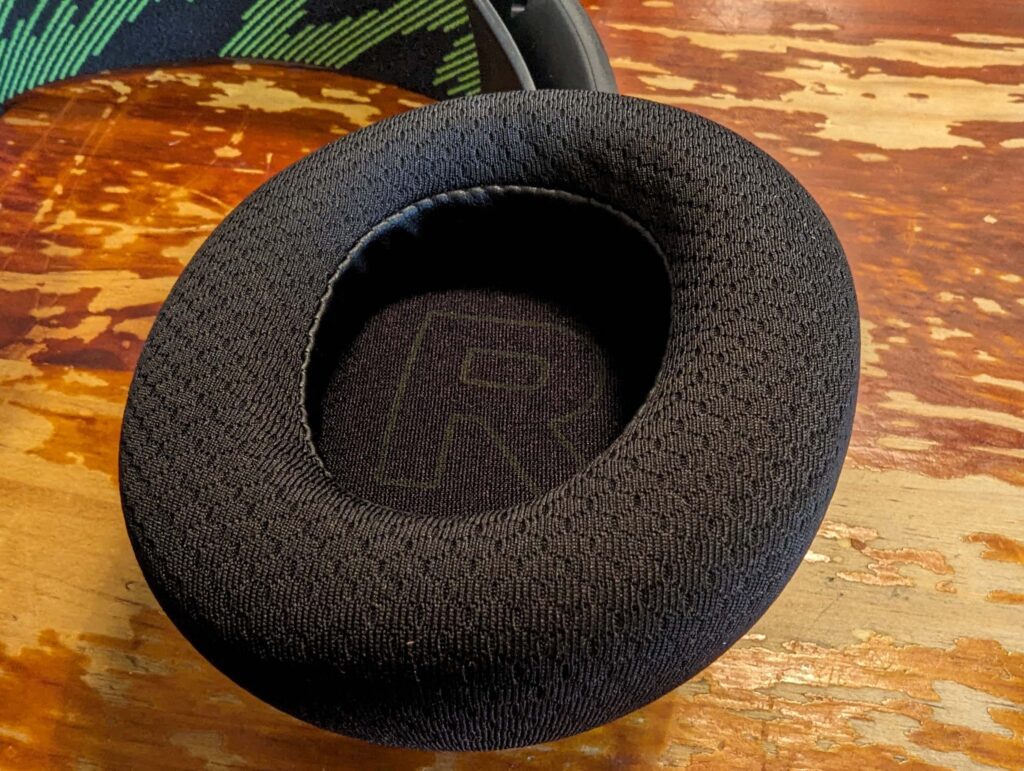
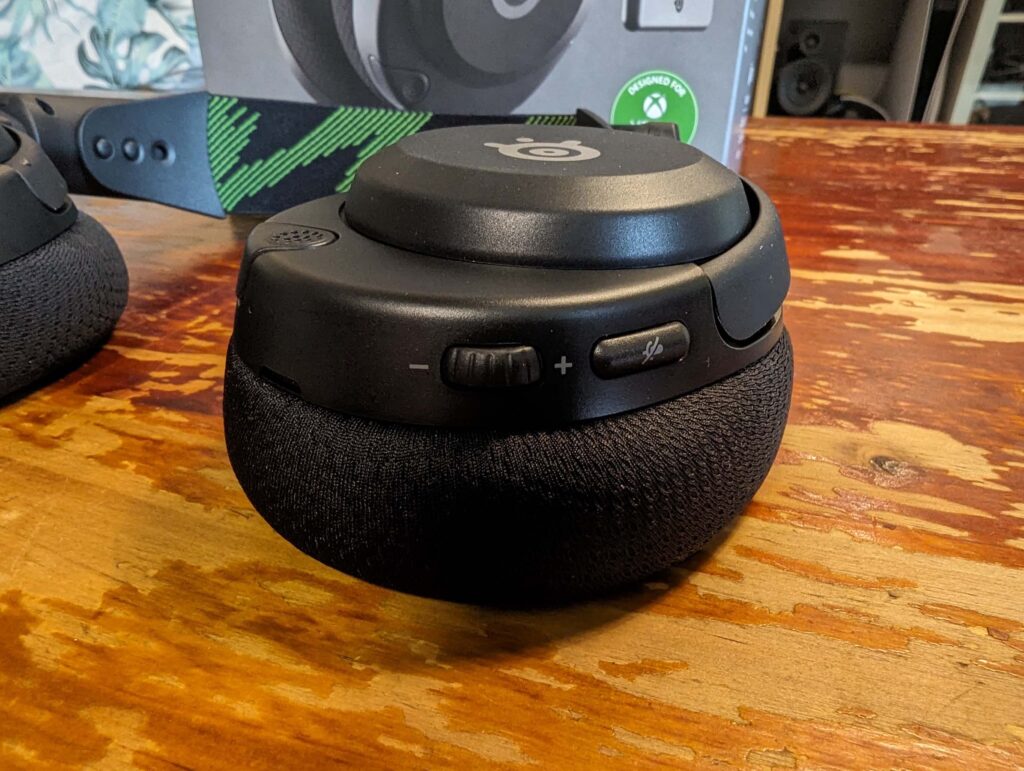
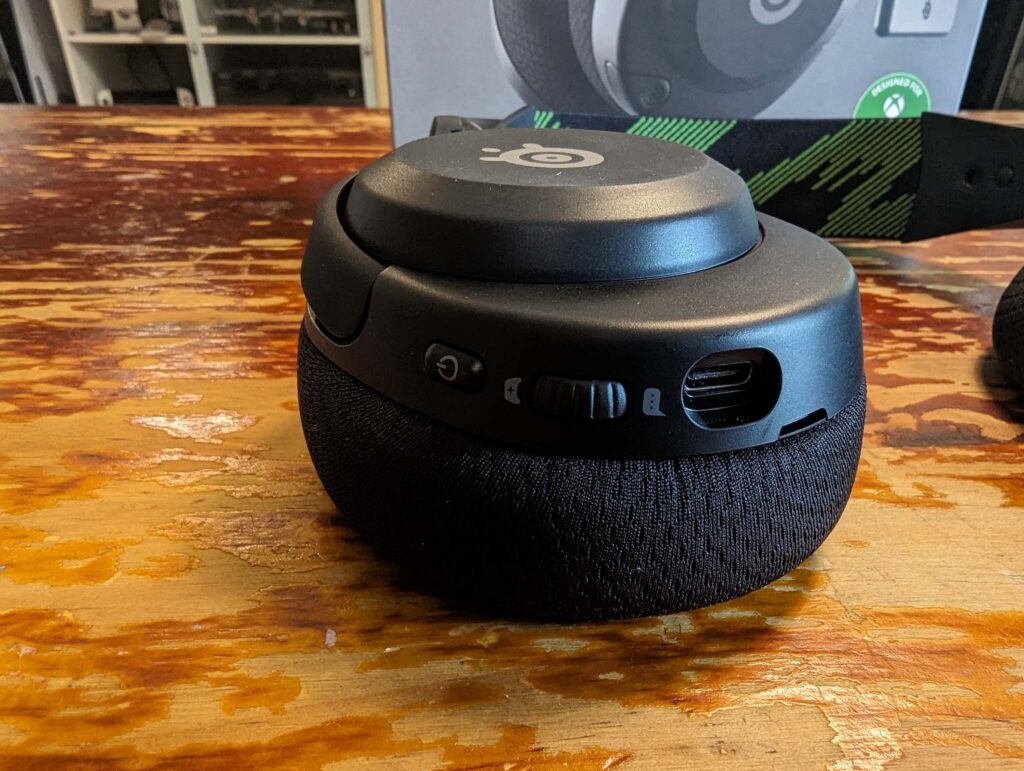
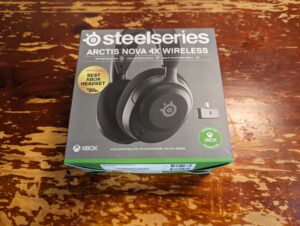

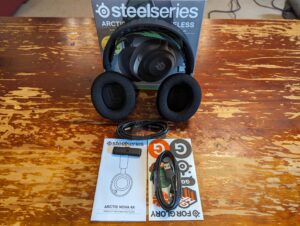


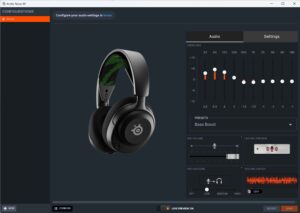


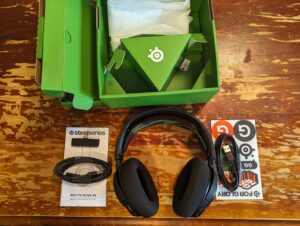

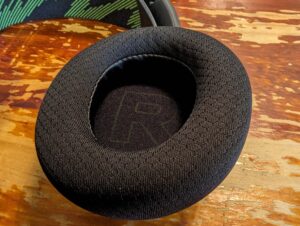
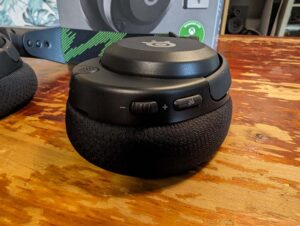
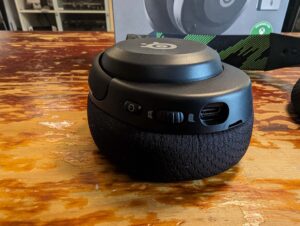
The SteelSeries Arctis Nova 4X Wireless gaming headset isn’t as fully featured as its premium-priced Nova Pro sibling. But at less than half the price, it doesn’t have to be. What you get for your cheaper investment is a gaming headset with solid sound, a decent noise-cancelling microphone and plenty of battery life. The fact it works on every major gaming platform you can throw at it makes the 4Xs a killer mid-range headset well worth considering.
How we review gaming headsets
We factor in price and connectivity when reviewing a gaming headset, then put it through the motions of testing during hours and hours of gaming and everyday use. This also lets us determine the battery life and extended comfort of a gaming headset, as well as garner feedback on how the microphone sounds when playing games with others.
Everyday testing includes video calls and music playback, and we favour headsets that are more than single-function devices. In fact, the headsets that tend to score the highest are those that marry big sound (including oomph-tastic bass) with all-day comfort. Wired and wireless gaming headsets are generally more closely compared in their respective connectivity categories, except where there’s crossover for things like comfort and sound performance.
Then we take a look at the nice-to-haves. Companion software isn’t necessarily a dealbreaker if it’s average, but it can help elevate the usefulness of a headset. We also appreciate easy-to-reach physical controls for the main functions on a headset.
SteelSeries Arctis Nova 4X Wireless frequently asked questions
Related Articles





